What is Dry Drowning? Essential Info and Prevention Tips for Parents
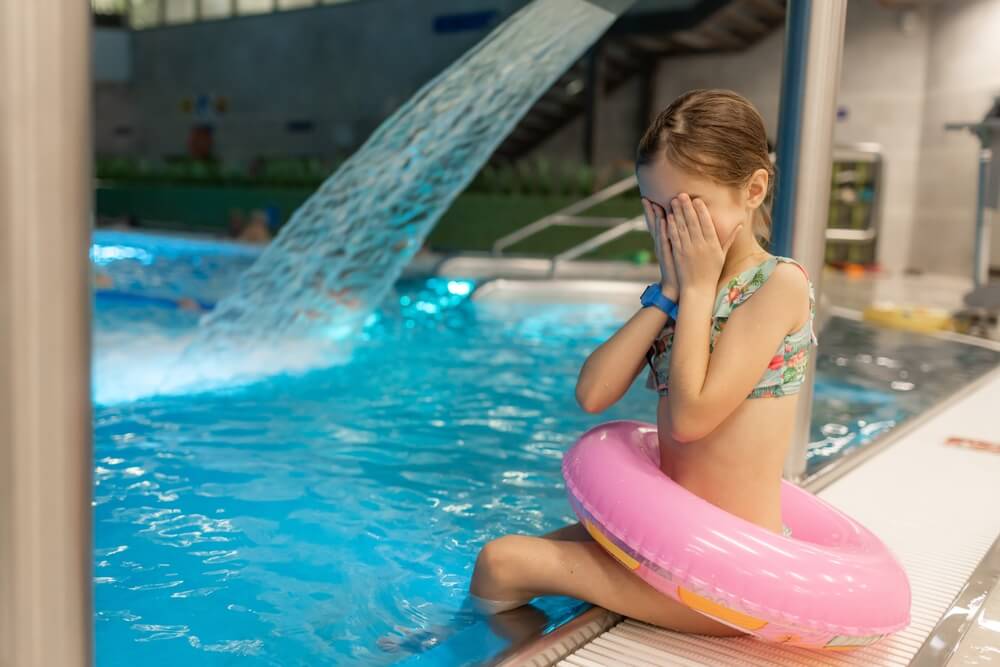
During any season, children often enjoy swimming in pools or playing in water. To ensure their safety and well-being, it’s crucial for parents to recognize the symptoms of dry drowning. Understanding these signs can help you take prompt and necessary action to protect your children.
Contents:
- What is Dry Drowning?
- Does Secondary Drowning Exist?
- Signs and Symptoms of Dry Drowning
- How Common is Dry Drowning?
- Does My Child Need Medical Attention After a Near-Drowning Incident?
- How is Dry Drowning Treated?
- How to Prevent Dry Drowning + Water Safety Tips
- FAQs
What is Dry Drowning?

Luis Louro/Shutterstock.com
Dry drowning is a rare but serious condition that affects your child’s ability to breathe after water or liquid ingestion. It doesn’t involve water entering the lungs directly.
Instead, when water is inhaled through the nose or mouth, it can trigger a laryngospasm. This causes the vocal cords to close over the windpipe, restricting airflow and making it difficult to breathe, otherwise known as asphyxiation. Unlike traditional drowning, where water fills the lungs, dry drowning responds to the body’s protective mechanism going awry.
Your child may start showing signs within an hour of being immersed in water. Since this condition doesn’t involve direct water inhalation into the lungs, it’s easy to overlook.
Understanding dry drowning means recognizing the importance of prompt action. It reminds us that even a brief struggle in the water can lead to delayed but severe respiratory issues that could result in brain damage, apnea, and other permanent conditions.
Does Secondary Drowning Exist?
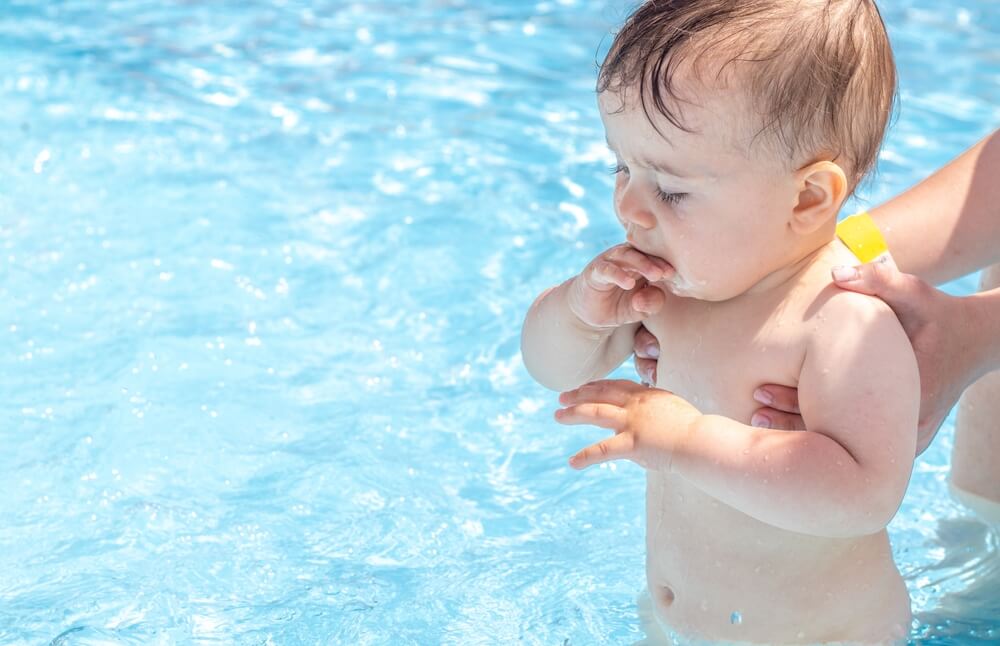
Alexandra Morosanu/Shutterstock.com
Secondary drowning is a serious condition that can occur after a child inhales water. Unlike typical drowning, where the incident is immediately life-threatening, secondary drowning symptoms may not appear until up to 48 hours after the initial event.
Essentially, it is a secondary injury resulting from a near-drowning experience. When water enters the lungs, it can irritate the delicate lining, causing fluid to build up. This buildup, known as pulmonary edema, impairs the child’s ability to breathe and can lead to dangerous complications.
Children might experience secondary drowning after a variety of water incidents, such as accidentally inhaling water while swimming, diving, or even playing in a shallow pool. After the initial scare, they may seem perfectly fine, but the risk lingers.
Parents should be vigilant for symptoms that may indicate secondary drowning. These include persistent coughing, chest pain, difficulty breathing, sudden changes in behavior, fatigue, and vomiting.
If you notice any of these signs after your child has been in the water, it’s crucial to seek immediate medical attention. Acting quickly can make a significant difference and help ensure your child’s safety.
Dry Drowning vs. Secondary Drowning
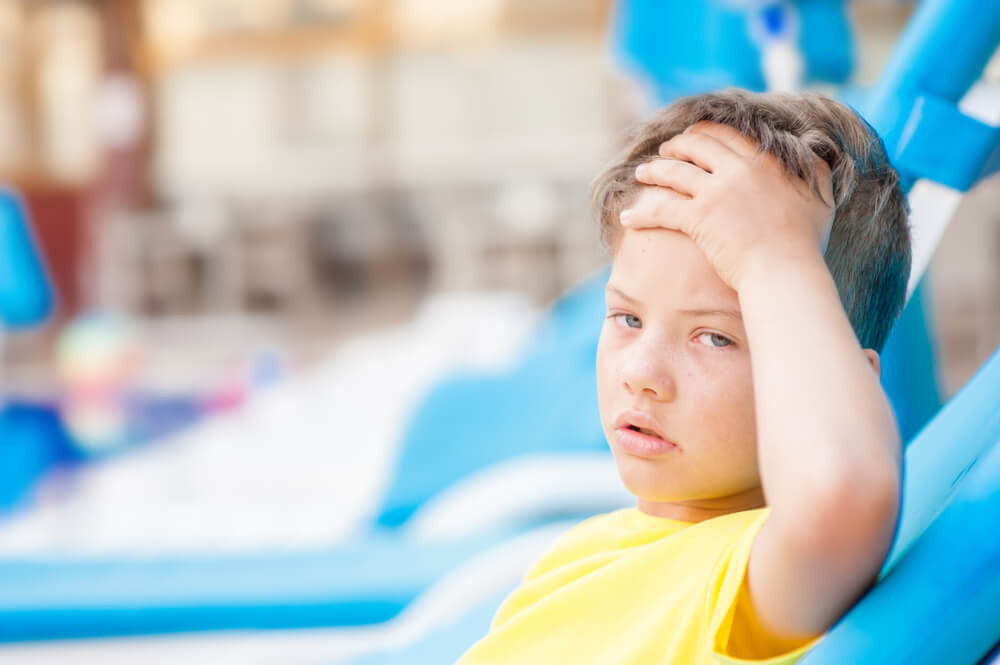
Ermolaev Alexander/Shutterstock.com
Dry drowning and secondary drowning, though related, occur under different timelines and conditions. In dry drowning, water exposure leads to muscle spasms and swelling in the throat and airway, and this usually happens almost immediately after coming out of the water.
You might notice symptoms within an hour, such as difficulty breathing, coughing, or chest pain. The airway spasm can cause the vocal cords to close up, blocking air from entering the lungs.
On the other hand, secondary drowning surfaces later. After apparent recovery from a water incident, symptoms can develop within 6 to 12 hours. This occurs when water has been inhaled into the lungs, leading to inflammation and fluid buildup, a condition known as pulmonary edema. Symptoms include persistent coughing, trouble breathing, and unusual tiredness.
Both types require immediate medical attention, but the timing and progression vary, making it critical to monitor anyone who has had a water-related incident.
Signs and Symptoms of Dry Drowning

JeannieR/Shutterstock.com
Dry drowning can be subtle but needs to be taken seriously. Signs of dry drowning include:
- Cough—Persistent coughing after being in water could indicate that the airway is irritated or blocked.
- Shortness of Breath—Fast, shallow breathing or a feeling of suffocation should not be ignored. It may signal airway constriction.
- Fatigue—Sudden and extreme tiredness can occur as the body struggles for oxygen. Avoid your child sleeping if you are concerned they may be sick.
- Vomiting—Vomiting might be a reaction to water in the stomach or lungs and is a significant warning sign.
- High Fever—May show increased temperature after 24 hours
- Behavioral Changes—Pay attention to sudden changes in behavior, such as irritability or a drop in energy levels.
- Change of Skin Color—The skin may appear paler due to lack of oxygen or infection
- Chest Pain—Complaints of chest pain or discomfort may indicate respiratory distress.
If you notice any of these symptoms after your child has been in the water, whether in a pool, lake, ocean, or bath, seek medical attention immediately.
This is not an instance where victims are actively choking and require the Heimlich maneuver. It’s actually more serene, and your child may not notice that they silently suffer from these symptoms for approximately a six-hour period after being underwater.
How Common is Dry Drowning?
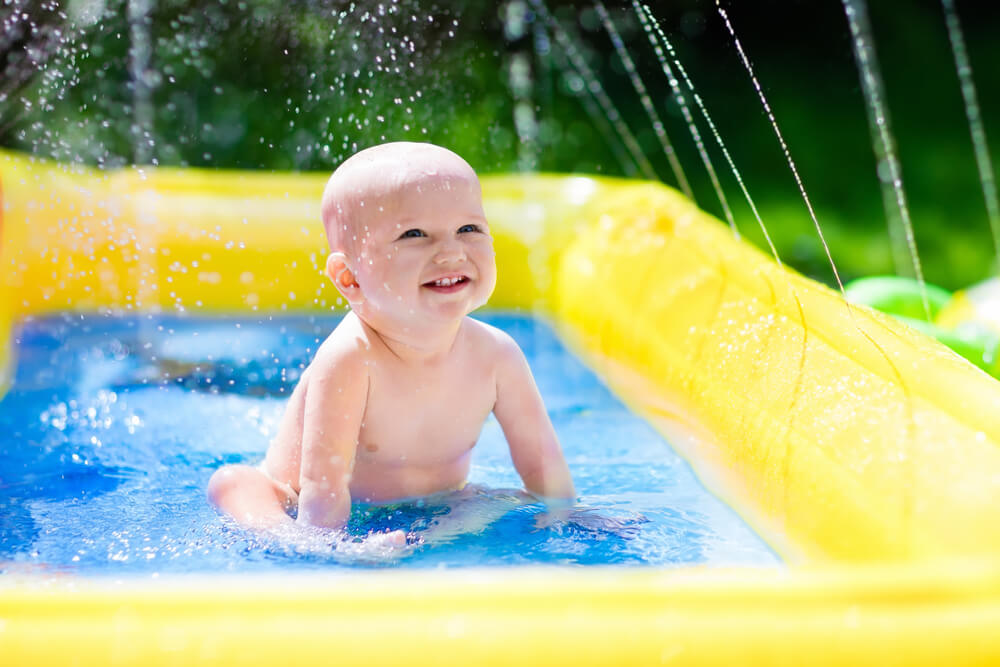
FamVeld/Shutterstock.com
Dry drowning is quite rare, but it can be a serious risk for victims such as infants and young children, although it can happen at any age.
Several situations can lead to dry drowning. For instance, a victim might accidentally inhale water while playing in a pool. Similarly, getting water in the nose from a dunk in the ocean or a splash in the bathtub can pose a risk, especially if the reaction causes a laryngeal spasm.
Even water that is shallow enough that reaches your ankles can result in victims drowning, either submersion or dry.
Another example is when a child swallows or chokes water during a swimming lesson or a water slide ride. The sudden rush of water can lead to a sense of panic and aspiration.
Regardless of the specific situation, any incident where water enters the airway should be monitored closely and occasionally checked for painful symptoms.
Remember, while the likelihood of dry drowning is low, vigilance is key. Always supervise children around water, no matter how shallow it may seem, and be aware of any signs of breathing distress or respiratory impairment following water exposure.
And don’t forget to download the Findmykids app to keep track of your child’s whereabouts and ensure their safety at all times. With Findmykids, you can have peace of mind knowing you can monitor your child’s location and receive alerts if they venture into unsafe areas.
Does My Child Need Medical Attention After a Near-Drowning Incident?
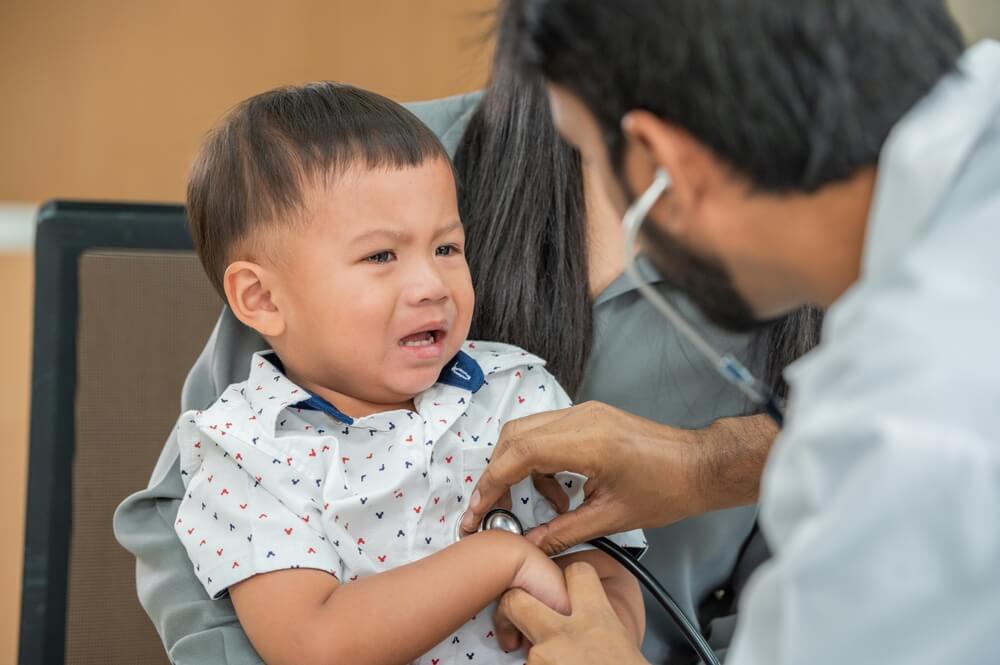
worradirek/Shutterstock.com
If your child experiences a near-drowning incident, it’s crucial to be cautious.
Watch for symptoms such as persistent coughing, fast breathing, or any sign of fatigue and vomiting. These may not appear immediately, so keep a close eye for several hours after the event.
If any of these symptoms develop, seek medical attention right away. It’s always better to err on the side of caution and have a healthcare professional evaluate your child. Prompt medical evaluation can prevent complications and provide peace of mind.
How is Dry Drowning Treated?
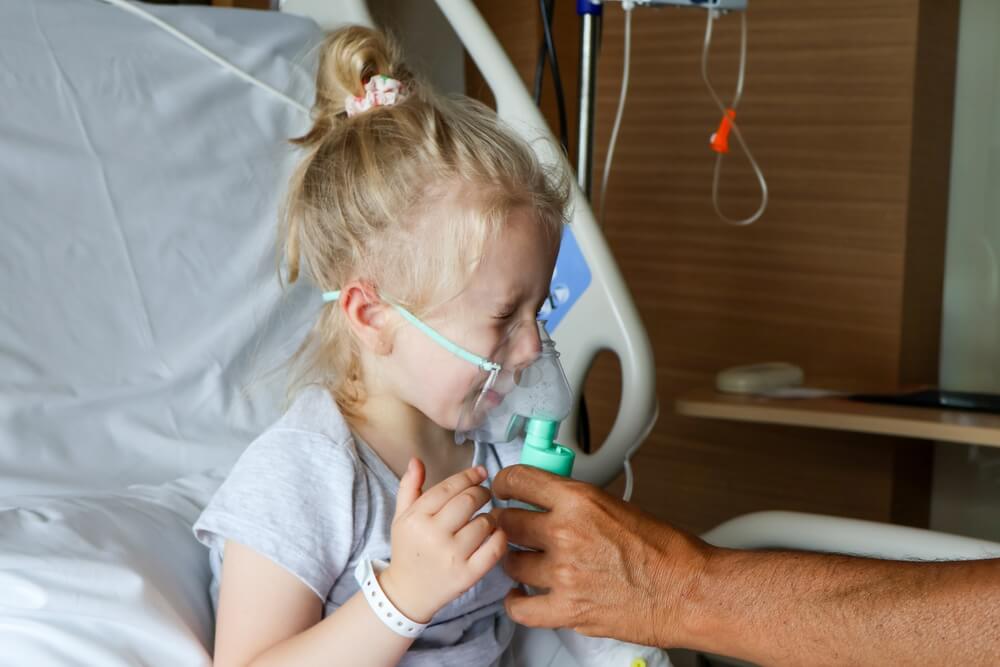
Oksana Sahinoglu/Shutterstock.com
Treatment for dry drowning starts with immediate medical attention. Health professionals may administer oxygen to help with breathing or use a ventilator in severe cases.
Monitoring is crucial; doctors will carefully observe your child’s respiratory rate, oxygen levels, and overall condition. Sometimes, medications might be given to reduce inflammation and relax the airway muscles.
Early and prompt treatment typically leads to full recovery without fear or threat of any lasting effects.
Complications of dry drowning can include pneumonia or dysphagia.
When to Seek Medical Attention
If your child shows difficulty breathing, persistent coughing, or any unusual behavior after a near-drowning event, seek medical attention immediately. Other alarming signs include changes in skin color, vomiting, or excessive fatigue.
If you have any concerns, take your child to a doctor.
How to Prevent Dry Drowning + Water Safety Tips

FamVeld/Shutterstock.com
Parents can take several precautions to prevent dry drowning and ensure their child’s safety in and around water.
- Constant Supervision—Always watch your child closely when they are near water. Never leave them unattended, not even for a moment.
- Assign a Water Watcher—Designate an adult to keep a vigilant eye on children in the water. Rotate shifts to avoid fatigue.
- Use Life Jackets—Make sure your toddler wears a properly-fitted life jacket when swimming or boating, especially if they are not strong swimmers.
- Learn CPR—Parents should be trained in CPR to provide immediate assistance if an emergency arises.
- Teach Water Safety—Educate your children about the importance of water safety, such as not running near the pool and understanding the depth of the water they are in.
- Swim Lessons—Enroll your child in swim lessons to build their confidence and skills in the water, making them safer swimmers.
- Safe Water Entry—Ensure your child always enters the water feet first to prevent injuries and sudden immersion.
- Install Barriers—If you have a pool at home, install fences and barriers to prevent unsupervised access. Ensure the pool area is securely locked when not in use.
By following these tips, you can create a safer environment for your child and significantly reduce the risk of dry drowning.
Parents can also use the Findmykids app to track their children’s whereabouts. If they are at the pool with friends, you can understand if they start to experience symptoms of dry drowning when they return home. Knowing they were playing in the water will help you understand what is happening and how to help them!
Understand How to Handle Dry Drowning
Understanding dry drowning is crucial for every parent. By knowing the symptoms, treatments, and preventive measures, you can act quickly and potentially save lives.
If you found this article helpful, please share it with other parents. Together, we can ensure all children enjoy water activities safely.
FAQs
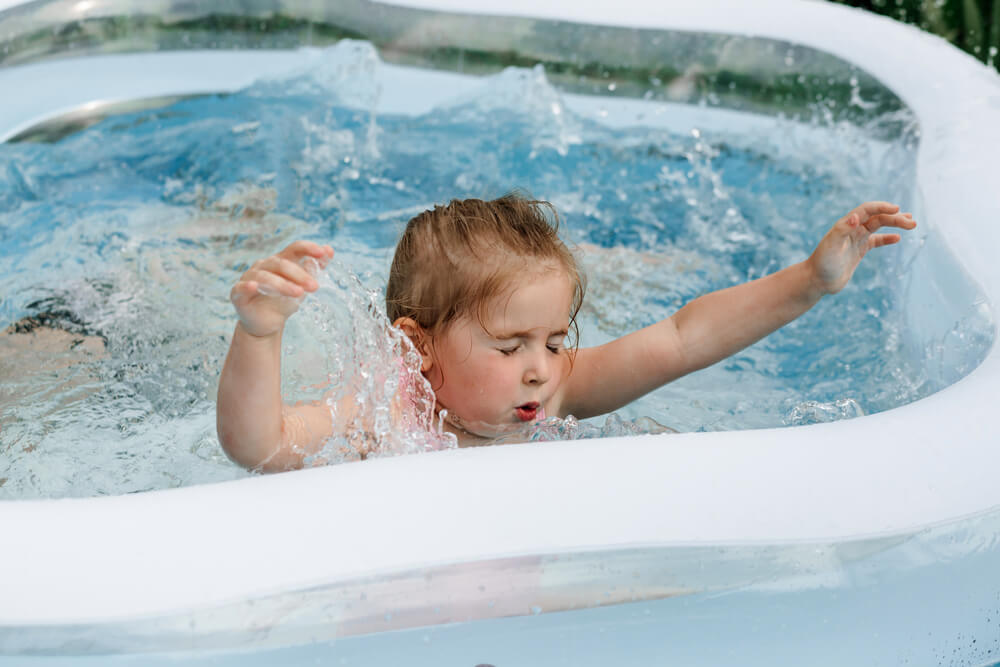
LenaLavr/Shutterstock.com
How do you know if you’re dry drowning?
If you notice sudden, severe coughing, difficulty breathing, or extreme fatigue after being in water, these could be signs of dry drowning. Symptoms develop quickly, often within an hour. Watch for tearing or burning chest pain, or feel like you’re suffocating. Seek immediate medical attention if any of these signs occur.
What is the cause of death in dry drowning?
In dry drowning, death occurs due to a laryngospasm that shuts off the airway, leading to suffocation. This involuntary spasm prevents oxygen from entering the lungs, causing a lack of oxygen in the bloodstream and critical organs, ultimately resulting in fatal respiratory failure if not treated promptly.
What causes dry drowning in kids?
Dry drowning in children is caused when water enters the nose or mouth, leading to a spasm in the larynx. This spasm closes the airway, making it difficult for the child to breathe. It often happens shortly after water exposure but can occur up to 24 hours later.
What is dry drowning vs. wet drowning?
Dry drowning involves water inhalation that causes a laryngospasm and blocks airflow without water entering the lungs. Wet drowning occurs when water floods the lungs, impairing the ability to breathe.
The picture on the front page: Forewer/Shutterstock.com
Проверьте электронный ящик



















